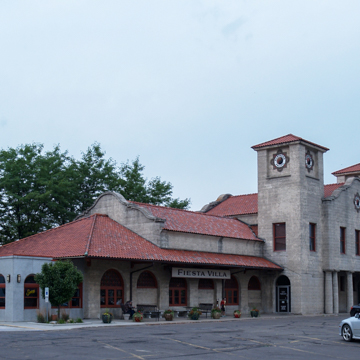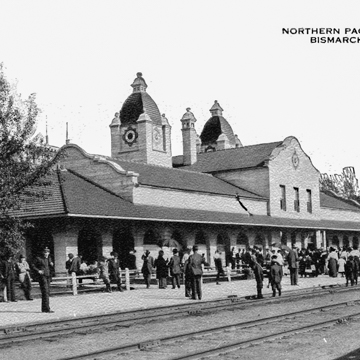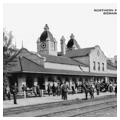You are here
Northern Pacific (NP) Railway Depot
The Spanish Mission design of the Northern Pacific Railway Depot would seem familiar in the Southwest and California, but it is rare on the northern Great Plains. Designed by the St. Paul-based firm of Charles A. Reed and Allen H. Stem, this depot enhanced the popular image of passenger travel on the railroad. The depot is organized as a two-story central block flanked by one-story wings. Terra-cotta plaques on each face of a thirteen-foot-high square tower bear the Northern Pacific logo, the Chinese-inspired “Great Monad” emblem. The depot is entered from a one-story portico carried on six concrete Tuscan columns. Southwestern features include a red tile roof that terminates in curved gabled parapets, battered walls, and inclined base moldings on exterior and interior walls. Spanish or adobe construction is simulated in the monolithic exterior walls, which are faced with coarse chips of marble embedded in a stucco finish. Tiny porcelain “baby” figurines set in the marble chips have fueled much speculation about their meaning.
Writing Credits
If SAH Archipedia has been useful to you, please consider supporting it.
SAH Archipedia tells the story of the United States through its buildings, landscapes, and cities. This freely available resource empowers the public with authoritative knowledge that deepens their understanding and appreciation of the built environment. But the Society of Architectural Historians, which created SAH Archipedia with University of Virginia Press, needs your support to maintain the high-caliber research, writing, photography, cartography, editing, design, and programming that make SAH Archipedia a trusted online resource available to all who value the history of place, heritage tourism, and learning.


















